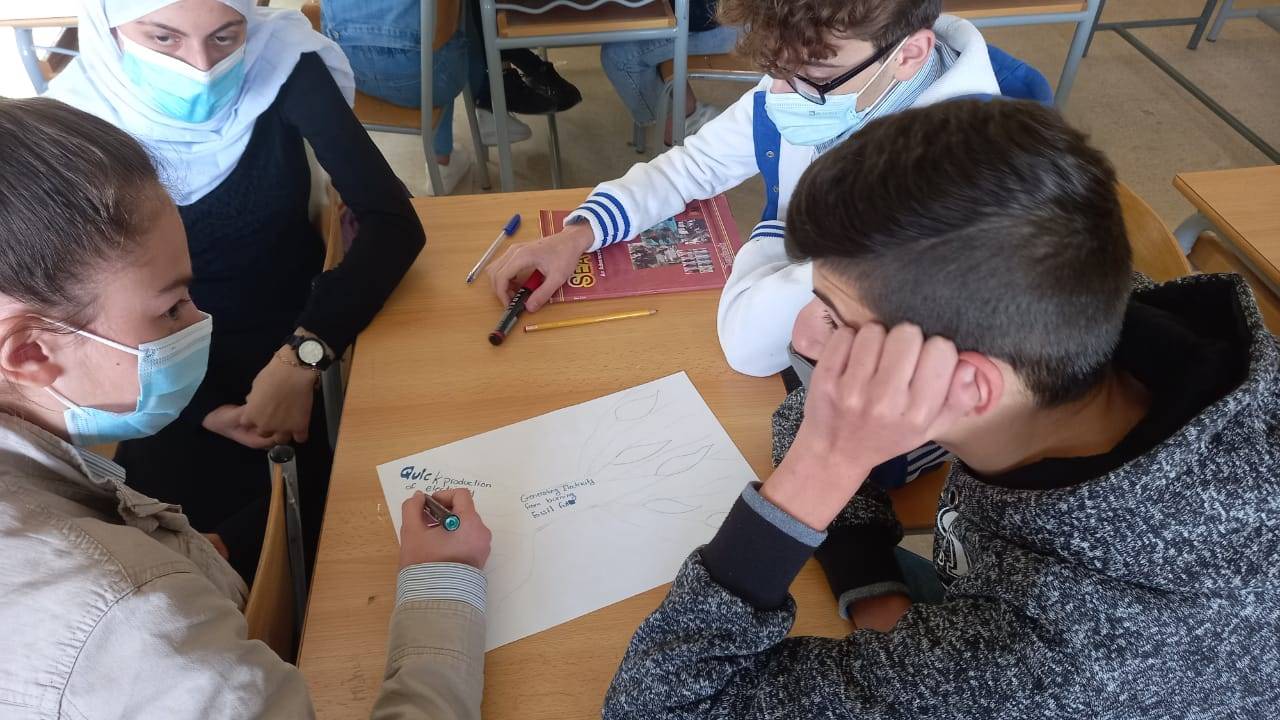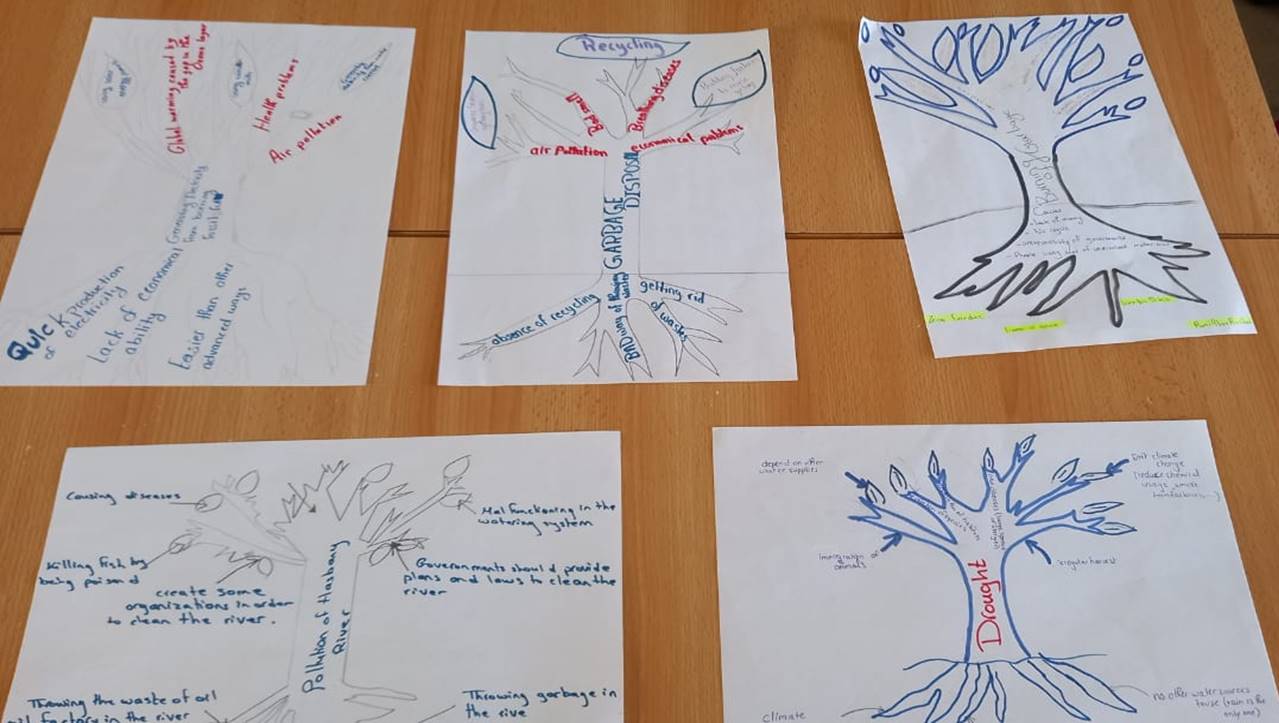Finding time and space for talk, reflection, dialogue and questioning in a busy classroom is never easy. The demands to “get through” the curriculum, prepare for examinations, squash in enrichment activities around the restrictions of the school week can mean that talk can become side-lined and unappreciated.
In a world where young people are increasingly interacting verbally online, they need face-to-face experiences to be purposefully replicated in schools. Supporting students to generate their own questions, consider personal responses, have space to think, be exposed to a range of perspectives are all part and parcel of the teacher role. The importance of skilled questioning of pupils by teachers to promote higher-order thinking skills is long acknowledged and student talk can be as beneficial within a supportive classroom environment.
In a world where young people are increasingly interacting verbally online, they need face-to-face experiences to be purposefully replicated in schools. Supporting students to generate their own questions, consider personal responses, have space to think, be exposed to a range of perspectives are all part and parcel of the teacher role. The importance of skilled questioning of pupils by teachers to promote higher-order thinking skills is long acknowledged and student talk can be as beneficial within a supportive classroom environment.
Participatory learning strategies are foundational to global learning. Participation promotes active listening, respect for different opinions, develops empathy and brings greater confidence in self-awareness and expression. These capabilities are valued in the “real world”, outside school, and enable young people to take an active role in the wider society. Enhancing communication, dialogue and social skills for individuals can be a big step in narrowing the gap and preventing marginalisation, both within and beyond school.
This is important for all students, whatever their abilities. This very much includes children who are learning an additional language and who may be new arrivals. Adapting to changing circumstances, getting to grips with a new language can be overwhelming. Opportunities to talk, gain peer support from class mates and have space to absorb these experiences is crucial for them to gain a sense of belonging.
At all times, home language, identity and culture should be celebrated, valued and acknowledged. How else can an educator begin to know and understand their pupils without time to talk? How can a young person absorb a new language without bilingual support and time to listen and engage with native speakers in everyday interactions? A language-rich environment, within a structured and supportive atmosphere, pays dividends for improving language acquisition, inclusion and confidence.
This is important for all students, whatever their abilities. This very much includes children who are learning an additional language and who may be new arrivals. Adapting to changing circumstances, getting to grips with a new language can be overwhelming. Opportunities to talk, gain peer support from class mates and have space to absorb these experiences is crucial for them to gain a sense of belonging.
At all times, home language, identity and culture should be celebrated, valued and acknowledged. How else can an educator begin to know and understand their pupils without time to talk? How can a young person absorb a new language without bilingual support and time to listen and engage with native speakers in everyday interactions? A language-rich environment, within a structured and supportive atmosphere, pays dividends for improving language acquisition, inclusion and confidence.
What steps can be taken to develop dialogue and enquiry? Clearly, a whole school approach, emphasising the importance of speaking and listening, can be a great help. Staff training in strategies such as Philosophy for Children (P4C) is useful for building staff confidence and creating a climate for oracy to flourish.
Within a single classroom, a book illustration, an object, a video, a photograph – any stimulus can be used to elicit questions. The more mysterious or obscure, the more interesting the questions might be! Encourage students to share and discuss their questions. Ask: What is this picture/object definitely showing you? What might it be showing? What does it make you want to know? Short, simple activities and games are a great way to get started.
Within a single classroom, a book illustration, an object, a video, a photograph – any stimulus can be used to elicit questions. The more mysterious or obscure, the more interesting the questions might be! Encourage students to share and discuss their questions. Ask: What is this picture/object definitely showing you? What might it be showing? What does it make you want to know? Short, simple activities and games are a great way to get started.
Be explicit and rehearse what “active listening” looks and feels like, in pairs. Barrier games, such as describing building a simple model behind a screen, for a partner to copy on the opposite side of the barrier, can be great fun.
Provide thinking time, for students to process questions and ideas individually (it takes longer than you think) and opportunities to work in pairs and small groups. Whole class discussion doesn’t work for everyone – start where your students are and know their strengths. Building confidence and feeling comfortable will be more successful in the long term, rather than feeling forced to contribute.
Provide thinking time, for students to process questions and ideas individually (it takes longer than you think) and opportunities to work in pairs and small groups. Whole class discussion doesn’t work for everyone – start where your students are and know their strengths. Building confidence and feeling comfortable will be more successful in the long term, rather than feeling forced to contribute.
Make use of tried and tested structures – stand on an opinion line or in a space to indicate your opinion and be ready to justify your position. Ensure a range of perspectives are shared and allow students to change position at the end of the activity, if they have shifted their view. Changing your mind is OK. Moving away from expecting to find simple answers when exploring complex issues, such as climate change, is a step towards becoming a more considered, critical thinker.
Support students to make their thinking visible using diagrams such as the "Issue Tree" or "Why? Why? Why? Chain" to capture their thoughts. This supports language development and provides a visual scaffold for them to use, to feed their ideas back to the class.
Speaking, listening, thinking, writing, reading are all complex processes. The more we can illustrate how these aspects of language are interlinked, the more sense it will make to young people, whatever their needs or background.
Support students to make their thinking visible using diagrams such as the "Issue Tree" or "Why? Why? Why? Chain" to capture their thoughts. This supports language development and provides a visual scaffold for them to use, to feed their ideas back to the class.
Speaking, listening, thinking, writing, reading are all complex processes. The more we can illustrate how these aspects of language are interlinked, the more sense it will make to young people, whatever their needs or background.
Further reading:
Language and Social Exclusion (I-Can) - Language and Social Exclusion (leaving-noone-behind.org)
Speech, Language and Communication in Secondary Aged Pupils (I-Can) - ican_talkseries10.pdf (leaving-noone-behind.org)
Research evidence (SAPERE) - https://www.sapere.org.uk/why-sapere-p4c/research-evidence/
UK National Oracy Charity - voice21.org/
Oracy and Additional Language Learners - voice21.org/eal-learners-and-oracy/
Global Citizenship in the Classroom - A guide for teachers (Oxfam) - edu-global-citizenship-teacher-guide-091115-en.pdf (openrepository.com)
Language and Social Exclusion (I-Can) - Language and Social Exclusion (leaving-noone-behind.org)
Speech, Language and Communication in Secondary Aged Pupils (I-Can) - ican_talkseries10.pdf (leaving-noone-behind.org)
Research evidence (SAPERE) - https://www.sapere.org.uk/why-sapere-p4c/research-evidence/
UK National Oracy Charity - voice21.org/
Oracy and Additional Language Learners - voice21.org/eal-learners-and-oracy/
Global Citizenship in the Classroom - A guide for teachers (Oxfam) - edu-global-citizenship-teacher-guide-091115-en.pdf (openrepository.com)





